-
 Bitcoin
Bitcoin $118100
-0.44% -
 Ethereum
Ethereum $3585
5.43% -
 XRP
XRP $3.434
5.65% -
 Tether USDt
Tether USDt $1.000
0.02% -
 BNB
BNB $743.8
3.89% -
 Solana
Solana $178.7
3.84% -
 USDC
USDC $1.000
0.03% -
 Dogecoin
Dogecoin $0.2381
12.81% -
 TRON
TRON $0.3270
3.62% -
 Cardano
Cardano $0.8315
4.93% -
 Hyperliquid
Hyperliquid $44.51
-4.42% -
 Stellar
Stellar $0.4710
1.52% -
 Sui
Sui $3.896
-2.51% -
 Chainlink
Chainlink $18.09
6.98% -
 Hedera
Hedera $0.2681
9.31% -
 Bitcoin Cash
Bitcoin Cash $516.7
4.83% -
 Avalanche
Avalanche $23.95
6.96% -
 Shiba Inu
Shiba Inu $0.00001490
5.67% -
 UNUS SED LEO
UNUS SED LEO $8.966
0.80% -
 Toncoin
Toncoin $3.294
4.39% -
 Litecoin
Litecoin $105.4
4.69% -
 Polkadot
Polkadot $4.356
5.30% -
 Uniswap
Uniswap $10.29
17.25% -
 Monero
Monero $327.9
-3.04% -
 Bitget Token
Bitget Token $4.942
4.33% -
 Ethena USDe
Ethena USDe $1.001
0.08% -
 Pepe
Pepe $0.00001348
2.17% -
 Dai
Dai $1.000
0.02% -
 Aave
Aave $320.8
0.58% -
 Bittensor
Bittensor $411.8
-4.07%
How to explain blockchain to someone with no tech background?
Blockchain is a shared digital ledger that records transactions across a decentralized network, making it secure, transparent, and tamper-resistant.
Jul 18, 2025 at 11:08 pm
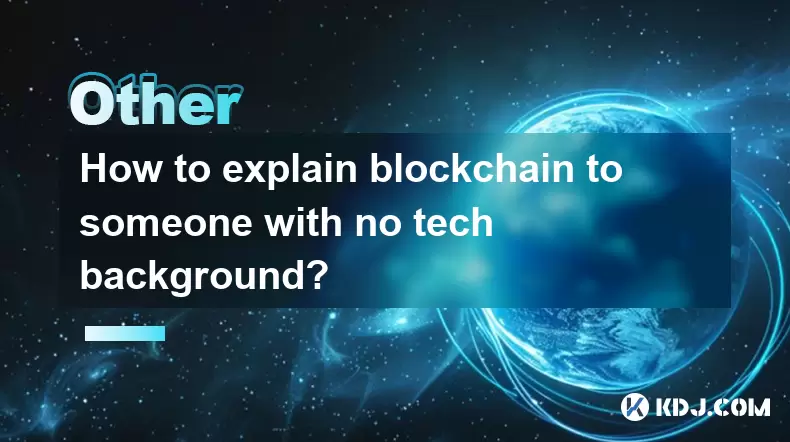
Understanding the Basics of Blockchain
To explain blockchain to someone with no tech background, it's essential to start with simple analogies and avoid technical jargon. Think of blockchain as a shared digital notebook that records transactions. This notebook is not owned by any single person or organization. Instead, it is available to everyone involved in the network, and anyone can check what’s written in it. Each time a transaction occurs, it gets added to a block, and once that block is full, it connects to the previous one, forming a chain — hence the term blockchain.
This decentralized structure is what makes blockchain technology unique. Unlike traditional banking systems, where a central authority like a bank keeps track of all transactions, blockchain allows peer-to-peer interactions without needing a middleman.
How Does a Transaction Work on the Blockchain?
Imagine you want to send money to a friend using blockchain. Instead of going through a bank, you broadcast your transaction to a network of computers. These computers, known as nodes, verify the transaction by checking if you have enough funds and if the transaction is legitimate.
Once verified, the transaction is grouped with others into a block. Before this block gets added to the chain, it must be validated by a consensus mechanism. The most common one is called Proof of Work, where computers solve complex puzzles to approve the block. Another popular method is Proof of Stake, where validators are chosen based on the amount of cryptocurrency they are willing to "stake" as collateral.
After validation, the block is permanently added to the blockchain, and the transaction becomes immutable, meaning it cannot be altered or deleted.
Why Is Blockchain Considered Secure?
One of the most important features of blockchain is its security. Because each block contains a unique digital fingerprint (called a hash) of the previous block, altering any information in a block would change all the following blocks. That would require changing the data on every computer in the network, which is nearly impossible.
Additionally, since the blockchain is distributed, there is no single point of failure. Even if one computer goes offline or gets hacked, the rest of the network remains intact. This makes blockchain technology highly resilient and tamper-resistant.
Real-World Examples to Illustrate Blockchain
To make it easier to understand, consider real-life scenarios:
- Banking: Traditional banks can take days to process international transfers. With blockchain, cross-border transactions can happen in minutes, and at a lower cost.
- Voting Systems: Some governments are exploring blockchain-based voting to prevent fraud and ensure transparency.
- Supply Chain: Companies use blockchain to track products from the factory to the store, ensuring authenticity and ethical sourcing.
These examples show how blockchain isn’t just for digital money like Bitcoin or Ethereum. It has practical applications across many industries.
Common Misconceptions About Blockchain
There are several myths surrounding blockchain that can confuse people who are not familiar with technology:
- Blockchain is only for cryptocurrencies: While Bitcoin popularized blockchain, the technology is used in many other areas like healthcare, logistics, and education.
- Blockchain is completely anonymous: Most blockchains are pseudonymous, meaning while real names aren’t attached, transactions can still be traced.
- Blockchain is unhackable: Although it is very secure, blockchain networks are only as secure as the people and systems interacting with them. For example, if someone loses their private key, their funds can be stolen.
Understanding these misconceptions helps clarify what blockchain really is and how it functions in the real world.
How to Explain Blockchain Using Everyday Analogies
Using analogies is one of the best ways to explain blockchain to non-tech people. Here are a few you can use:
- Google Docs Analogy: Normally, when you share a document with someone, you have to send them a copy. But with Google Docs, both people can access the same document at the same time. Blockchain works similarly, but instead of a document, it’s a ledger of transactions that everyone can see and update together.
- Public Ledger at a Town Hall: Imagine a town where every time someone buys a house, the sale is recorded in a public book that everyone can view. If someone tries to change a past entry, the whole town would notice. That’s how blockchain maintains trust.
- Group Chat Verification: Think of a group chat where every message is checked and confirmed by everyone before it’s added to the conversation history. Once a message is in, it can’t be taken out. That’s how transactions are verified and stored on the blockchain.
These analogies help demystify the complex mechanisms behind blockchain and make it more relatable.
Frequently Asked Questions
What is the difference between blockchain and Bitcoin?
Bitcoin is a digital currency that uses blockchain as its underlying technology. Blockchain, however, is a broader concept that can be used for many purposes beyond just digital money.
Can blockchain be changed once data is added?
No, once data is added to a blockchain, it becomes immutable. Any attempt to alter past data would require changing all subsequent blocks and gaining control of the majority of the network, which is extremely difficult.
Is blockchain only used for financial transactions?
No, blockchain is used in various industries such as supply chain, healthcare, voting systems, and even digital identity verification.
Who controls the blockchain?
No single person or organization controls the blockchain. It is decentralized, meaning it is maintained by a network of computers around the world.
Disclaimer:info@kdj.com
The information provided is not trading advice. kdj.com does not assume any responsibility for any investments made based on the information provided in this article. Cryptocurrencies are highly volatile and it is highly recommended that you invest with caution after thorough research!
If you believe that the content used on this website infringes your copyright, please contact us immediately (info@kdj.com) and we will delete it promptly.
- Coinbase (COIN) Soars to All-Time High: What's Next?
- 2025-07-19 00:30:12
- DOGE, BlockDAG, and Vesting: What's Hot and What's Not in Crypto Right Now
- 2025-07-19 01:10:14
- Crypto Coins with 2025 Potential: BlockDAG and SUI Lead the Charge
- 2025-07-19 01:15:12
- Grass Cutting Hacks: Finding the Right Height for a Lush Lawn
- 2025-07-19 00:30:12
- RWA Token Revolution: Stage Point Europe Leads Crypto Real Estate Launch in Europe
- 2025-07-19 00:50:13
- Token Unlocks and AVAIL: July's Crypto Cliffhangers!
- 2025-07-19 00:50:13
Related knowledge
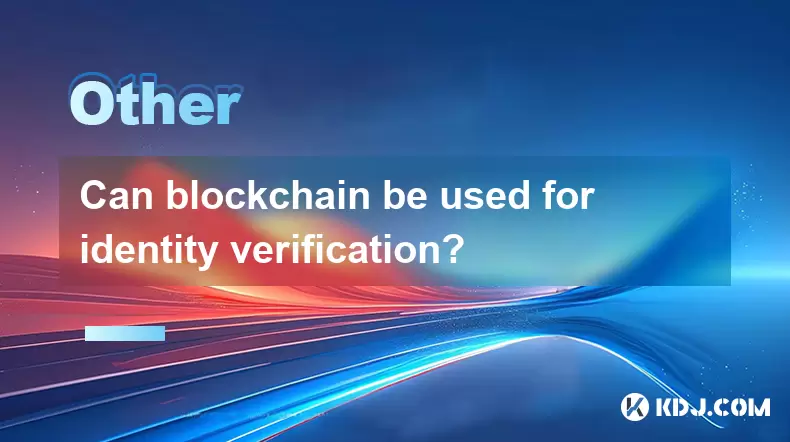
Can blockchain be used for identity verification?
Jul 18,2025 at 02:14pm
Understanding Identity Verification in the Digital AgeIn the modern digital landscape, identity verification has become a critical component for ensur...

How to explain blockchain to someone with no tech background?
Jul 18,2025 at 11:08pm
Understanding the Basics of BlockchainTo explain blockchain to someone with no tech background, it's essential to start with simple analogies and avoi...
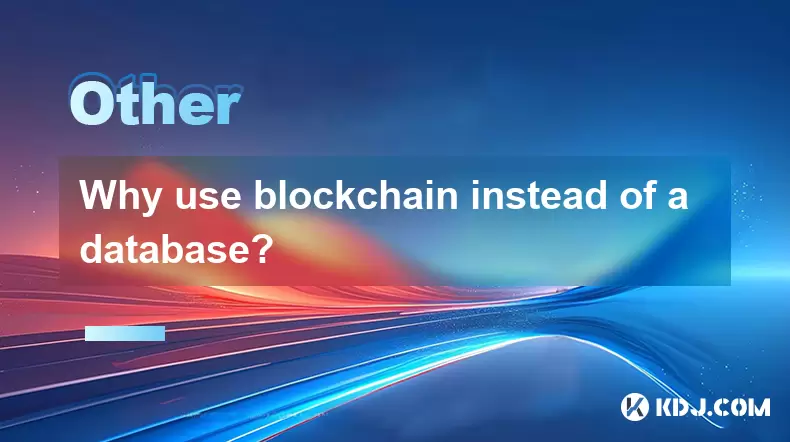
Why use blockchain instead of a database?
Jul 18,2025 at 07:00pm
Decentralization and Trustless SystemsOne of the core reasons for choosing blockchain over a traditional database lies in the concept of decentralizat...

What is a smart contract on the blockchain?
Jul 18,2025 at 06:42pm
Understanding the Concept of a Smart ContractA smart contract is a self-executing contract with the terms of the agreement directly written into code....
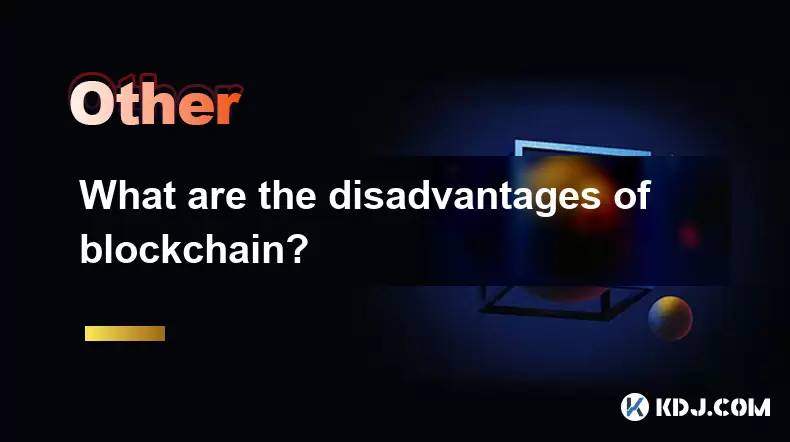
What are the disadvantages of blockchain?
Jul 18,2025 at 10:08pm
High Energy Consumption and Environmental ImpactOne of the most frequently discussed disadvantages of blockchain technology is its high energy consump...
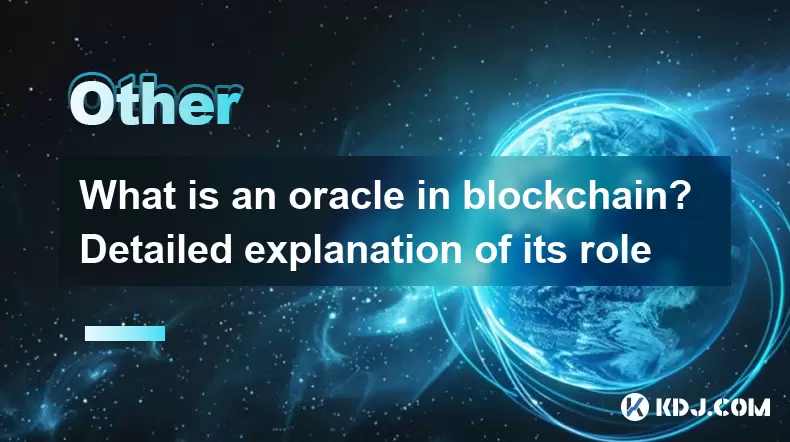
What is an oracle in blockchain? Detailed explanation of its role
Jun 21,2025 at 06:14am
Understanding the Concept of an Oracle in BlockchainIn the realm of blockchain technology, an oracle is a trusted third-party service that connects sm...

Can blockchain be used for identity verification?
Jul 18,2025 at 02:14pm
Understanding Identity Verification in the Digital AgeIn the modern digital landscape, identity verification has become a critical component for ensur...

How to explain blockchain to someone with no tech background?
Jul 18,2025 at 11:08pm
Understanding the Basics of BlockchainTo explain blockchain to someone with no tech background, it's essential to start with simple analogies and avoi...

Why use blockchain instead of a database?
Jul 18,2025 at 07:00pm
Decentralization and Trustless SystemsOne of the core reasons for choosing blockchain over a traditional database lies in the concept of decentralizat...

What is a smart contract on the blockchain?
Jul 18,2025 at 06:42pm
Understanding the Concept of a Smart ContractA smart contract is a self-executing contract with the terms of the agreement directly written into code....

What are the disadvantages of blockchain?
Jul 18,2025 at 10:08pm
High Energy Consumption and Environmental ImpactOne of the most frequently discussed disadvantages of blockchain technology is its high energy consump...

What is an oracle in blockchain? Detailed explanation of its role
Jun 21,2025 at 06:14am
Understanding the Concept of an Oracle in BlockchainIn the realm of blockchain technology, an oracle is a trusted third-party service that connects sm...
See all articles

























































































